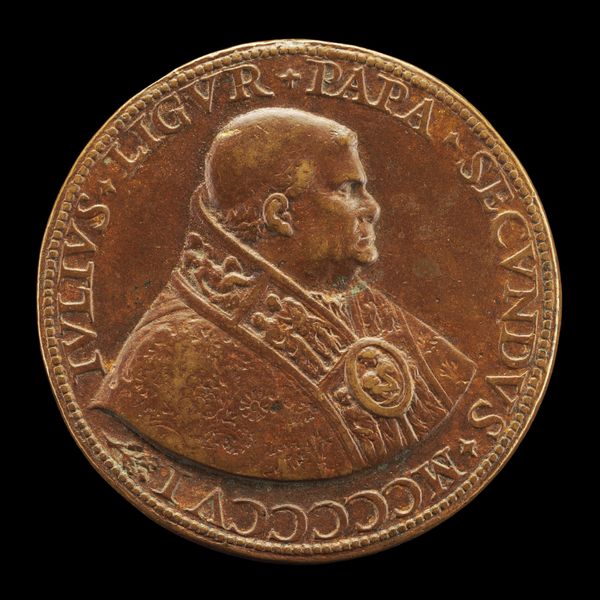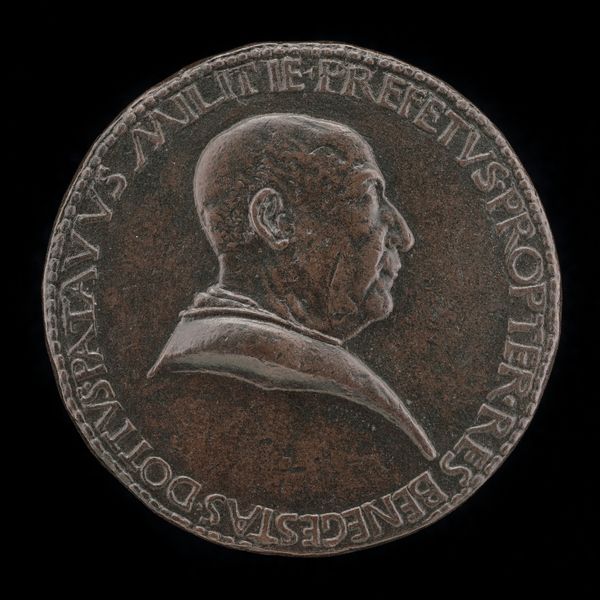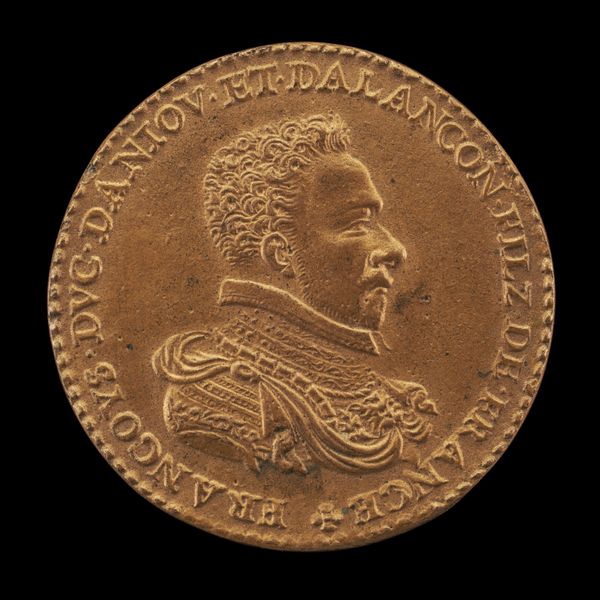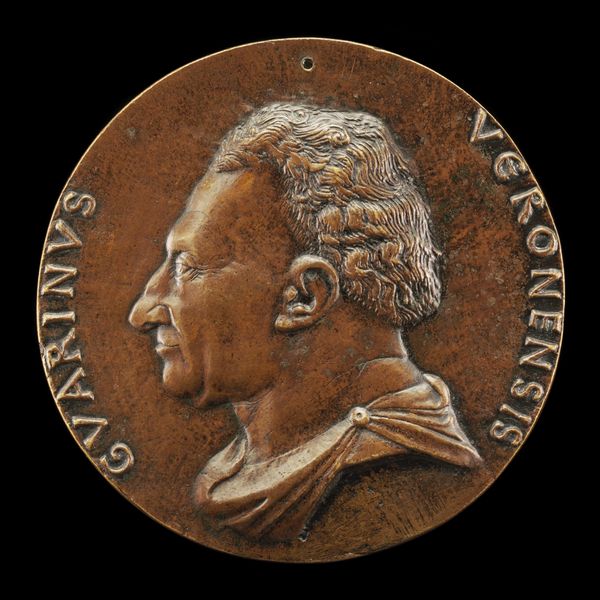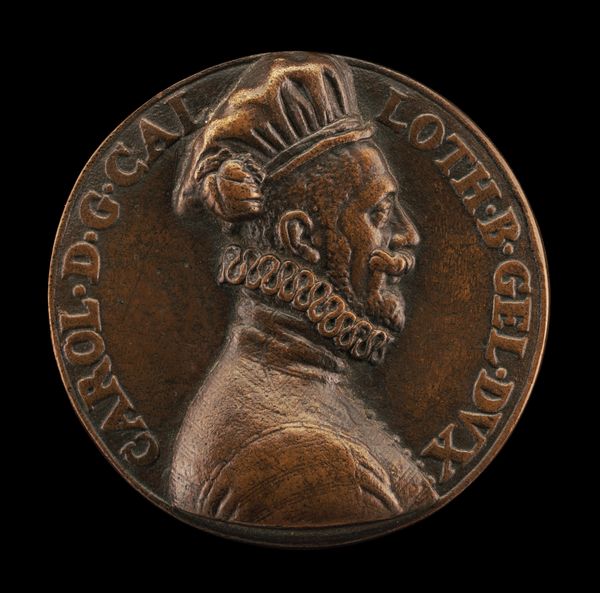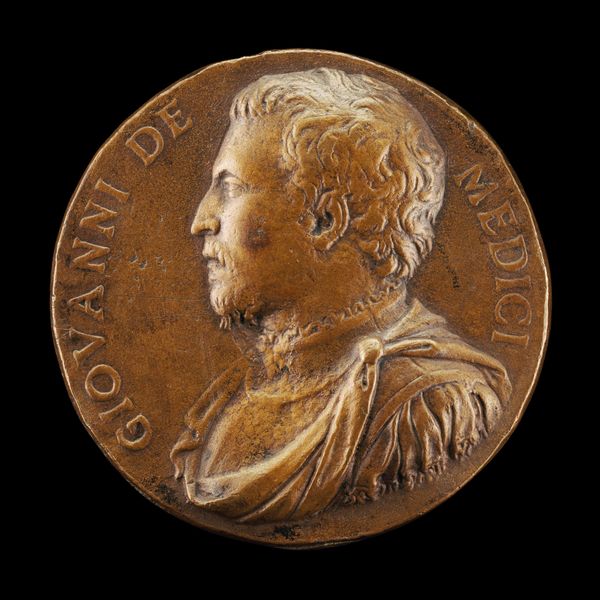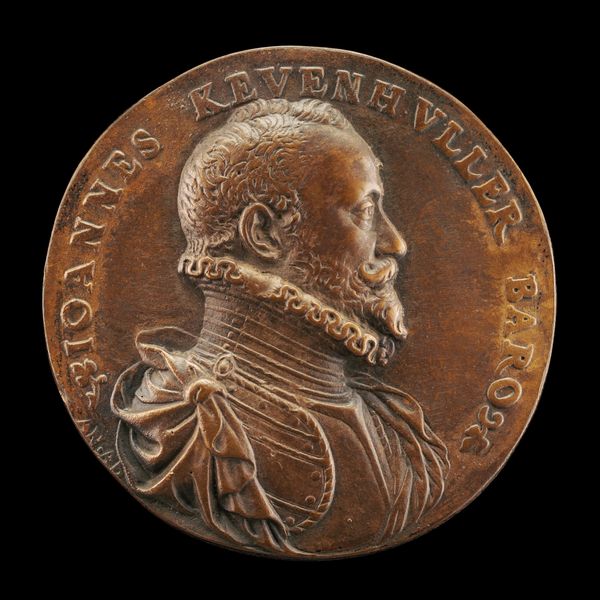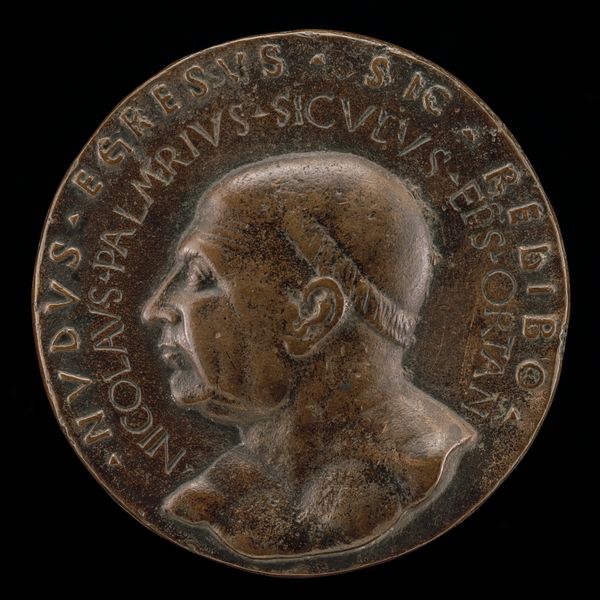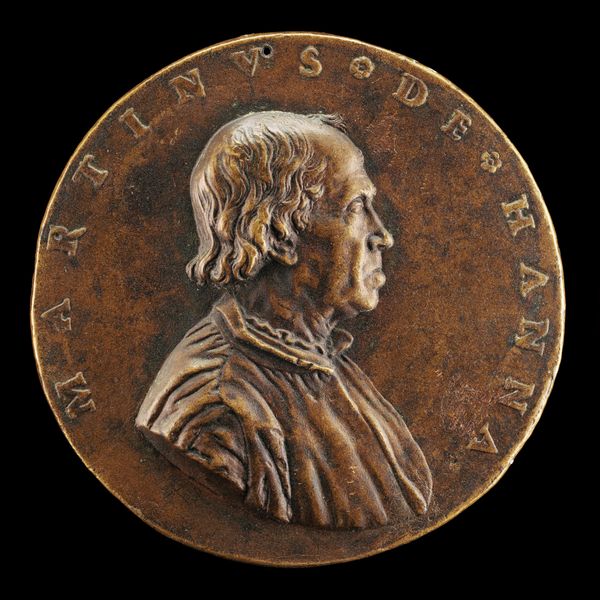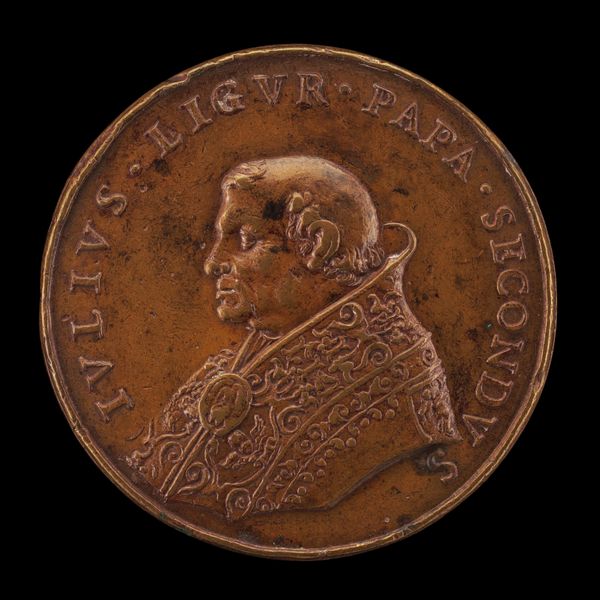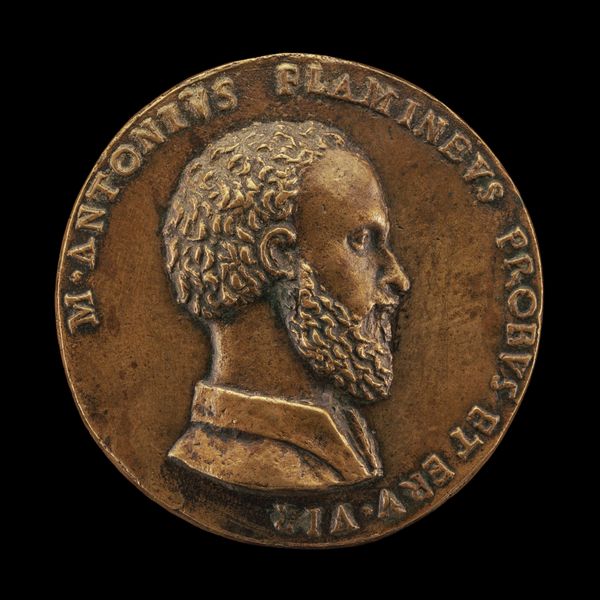![Pius II (Aeneas Silvius Piccolomini, 1405-1464), Pope 1458 [obverse] by Andrea Guacialoti](/_next/image?url=https%3A%2F%2Fd2w8kbdekdi1gv.cloudfront.net%2FeyJidWNrZXQiOiAiYXJ0ZXJhLWltYWdlcy1idWNrZXQiLCAia2V5IjogImFydHdvcmtzLzE1ZGNkMGM4LWJhYjYtNGQ0MS05YWNlLTU0NzlhYzIyZTUzMC8xNWRjZDBjOC1iYWI2LTRkNDEtOWFjZS01NDc5YWMyMmU1MzBfZnVsbC5qcGciLCAiZWRpdHMiOiB7InJlc2l6ZSI6IHsid2lkdGgiOiAxOTIwLCAiaGVpZ2h0IjogMTkyMCwgImZpdCI6ICJpbnNpZGUifX19&w=3840&q=75)
Pius II (Aeneas Silvius Piccolomini, 1405-1464), Pope 1458 [obverse] 1458 - 1464
0:00
0:00
relief, bronze, sculpture
#
portrait
#
medal
#
sculpture
#
relief
#
bronze
#
sculpture
#
history-painting
#
italian-renaissance
Dimensions: overall (diameter): 5.4 cm (2 1/8 in.) gross weight: 46.18 gr (0.102 lb.) axis: 6:00
Copyright: National Gallery of Art: CC0 1.0
Curator: Ah, I'm drawn to the gravitas—a certain solemnity. Something almost... oppressive? What do you make of it? Editor: We're looking at a bronze medal depicting Pius II, crafted sometime between 1458 and 1464. The artist who created this striking portrait is Andrea Guacialoti. Curator: It's interesting, isn't it, how the circular format—the framing—influences our perception? It turns his authority into something...contained, almost like a cage of importance. The inscription works as a semiotic ring, solidifying identity within defined borders. Editor: Precisely. The Renaissance saw a real revival in portraiture, particularly in commemorative objects like this. Notice how the profile is rendered in relief. Curator: That low relief throws his features forward, really pushing the three-dimensionality. The nose, especially, is assertive. It is so telling of an ideal: The ambition to communicate the character and accomplishments of the individual beyond simple aesthetics is strong. I think. I almost feel like it anticipates Baroque flamboyance with a touch of introspection. Editor: Flamboyant yet introverted. That's a very neat way to put it! Given Pius II's well-documented intellect, you could suggest that that tension really hits the nail on the head. And let's note the inscription. AENEAS PIUS SENENSIS PAPA SECUNDUS. "Aeneas Pius of Siena, Pope the Second". This inscription roots the image firmly in his identity and origins. A political statement if anything. Curator: Definitely. And there's a fascinating austerity in the material—bronze. It suggests permanence, timelessness...a calculated projection of papal power. A medium choice with significant symbolic depth, I'd say. I see something unyielding. What would you say to that, in a broader perspective? Editor: I think, ultimately, it is a clever piece of political craftsmanship. Beyond artistry, a piece speaking volumes of status and historical record! One could almost see it like a Renaissance precursor to modern PR, framing an individual's narrative.
Comments
No comments
Be the first to comment and join the conversation on the ultimate creative platform.
